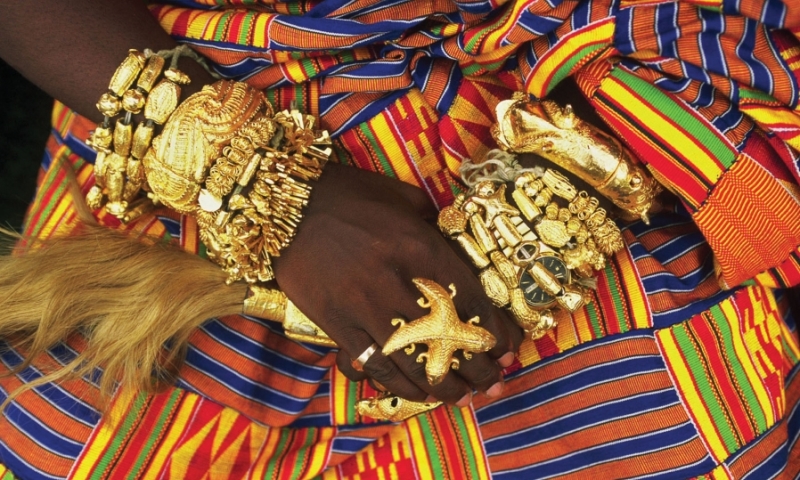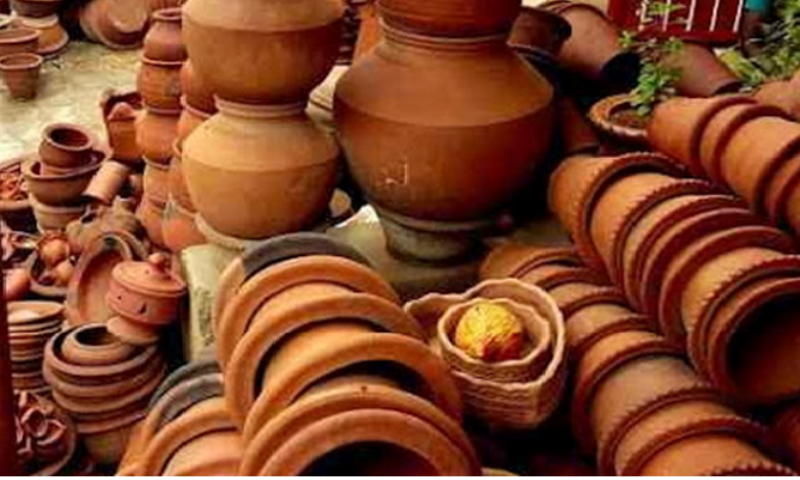What the black star, the red, gold, and green colors represent on Ghana flag

The national flag of Ghana consists of a black star and 3 horizontal stripes of red, gold, and green.
It was designed in replacement of the British Gold Coast’s Blue Ensign.
Ghana’s flag was adopted upon the independence of the Dominion of Ghana on March 6, 1957. It was designed the same year by Theodosia Okoh, a renowned Ghanaian artist.
Theodosia Okoh (Ghana’s national flag designer)
Theodosia Salome Abena Kumea Okoh was a renowned Ghanaian artist who has contested and showcased her artistic internationally.
She joined the Ghana Hockey Association (GHA) and worked in the role of a chairperson. She was also a patron of the Sports Writer’s Association of Ghana (SWAG).
The flag was flown until 1964 and it was then reinstated in 1966.
The flag of Ghana consists of the Ethiopian Pan-African colours of red, yellow, and green in horizontal stripes with a black five-pointed star in the centre of the gold stripe.
The Ghanaian flag was the second African flag after the flag of the Ethiopian Empire to feature these colours, although the colours are inverted. The flag’s design influenced that of the flag of Guinea-Bissau.
The colours are a representation of the country’s struggle for independence and a symbol of its rich resources of the country.
A Black Star is at the centre of the gold colour.
Black Star
The black star of the Ghanaian national flag is a symbol used to represent the emancipation of Africa and unity against colonialism.
The black star was adopted from the flag of the Black Star Line, a shipping line incorporated by Marcus Garvey which operated from 1919 to 1922 and became also known as the Black Star of Africa.
It is where the Ghana national football team derive their nickname, the “Black Stars”.
Red
The red colour of the national flag of Ghana was used to represent the blood of forefathers who led the struggle of independence and shared their blood through death. The country’s struggle for independence from the United Kingdom took the life of prominent Ghanaian leaders at the time. The names of the big six were Edward Akufo Addo, Dr. Ako Adjei, William Ofori Atta, Joseph Boakye Danquah, Emmanuel Obetsebi Lamptey, and later Osagyefor Dr. Kwame Nkrumah.
The big six formed the United Gold Coast Convention (UGCC), an anti-colonialist political party formed to gain Ghanaian independence from British colonial rule.
Red also stands for love which might have influenced our forefathers who led the struggles for Ghana’s independence for the love of the nation.
Gold
The gold colour takes the centre line of the three colours attraction and it represents the mineral resources mostly found in the Ashanti region of Ghana, helping to harness the wealth of the country.
The gold is one of Ghana’s mineral resources found mostly in Obuasi in Ashanti Region and Tarkwa in the Western Region. The enrichment of the gold resources of Ghana led to the initial name the Gold Coast which was later changed to Ghana of the struggle and success of the attainment of independence in 1957.
Ghana’s other mineral resources are diamond, bauxite, and manganese.
Green
The green symbolises Ghana’s rich forests and natural wealth which provide the nation with oil, food, and cash crops such as cocoa, timber, sheabutter, and all kinds of food products for the country.
The green colour till today is used as a symbol of the green vegetations of crop produce in Ghana.
Ghana is noted for its cash crop of cocoa which was first brought to Ghana by Tetteh Quarshie from Fernando Po.
Most of Ghana’s cash crops are exported to overseas countries in exchange for physical cash which is used for the country’s development of roads, schools, water, sanitation and industries for employment.












